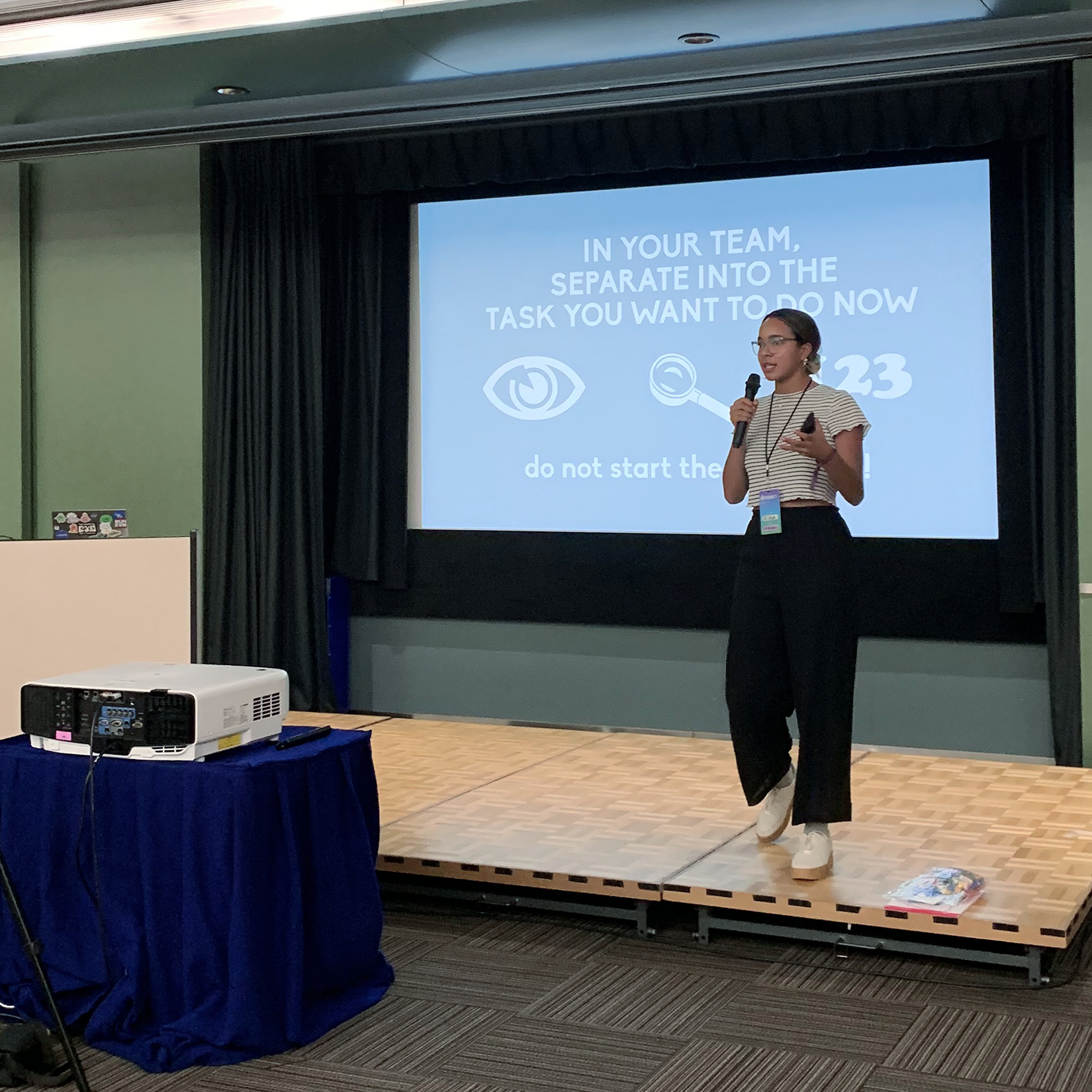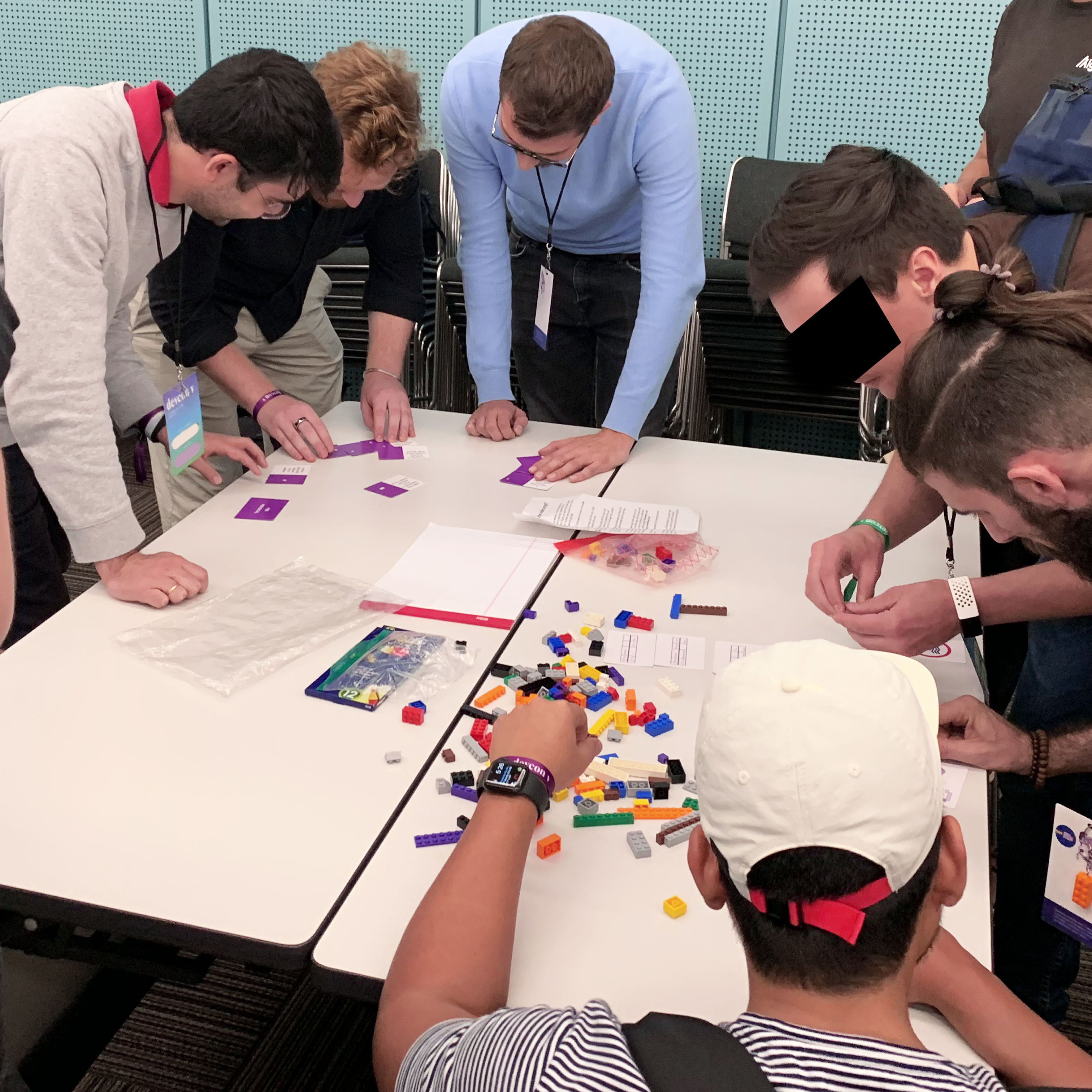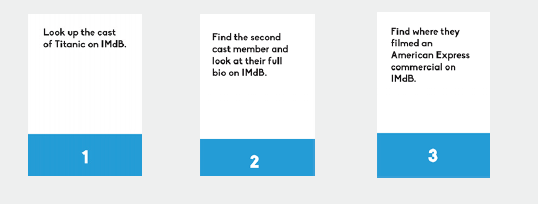D_SC_NN_CT_D with the UNICEF Office of Innovation
How do you get 1GB of data to a girl in northern Uganda when she needs it? This is the reality of information poverty.
Client
UNICEF Office of Innovation
Service
Bespoke Design
Date
Oct 2019

The Challenges
The audience had a shared interest in technology and information infrastructure, but was otherwise very culturally diverse. The game had to be able to run without either designer present, and had strict requirements for duration.
The Process
Allison and her co-designer, Banana Chan, were given a large degree of independence, with periodic check-ins with Unicef Innovation. By drawing on personal experiences, they designed puzzles that drew on a combination of general knowlege, puzzle-solving skills, and information that players could look up on the internet (if they managed to connect).
The Outcome
A bespoke experience that communicates the experience of information poverty to spur new thinking around the problem, which surprised participants with how awesome it was.

Thank you so much for your work. The game created the empathy with the users that we were looking for. [...] Two of the four groups were able to solve the mystery before the time was up. The teams were really into it and we got a lot of positive feedback from participants [who said] it was awesome.
The UNICEF Office of Innovation Team

The Project
Direct from the UNICEF Office of Innovation: "Design a 60-75 minute session aimed at engaging approximately 150 developers in an interactive session around building applications with the constraint of information poverty (i.e lack of internet connectivity / low bandwidth / sporadic connection). Ideally, participants would be broken into smaller working groups to participate, however, interact between groups; simulating how communities often need to interact with one another. The goal is to have participants think outside of their traditional frameworks to solve a unique challenge."
About UNICEF Office of Innovation
The UNICEF Office of Innovation's mission is to accelerate the process of meeting worldwide sustainable development goals to build a better world with and for children. They do this by developing strategic partnerships and pushing innovation on many scales, from "frugal innovations that can easily be adopted, adapted and scaled up" to technological solutions involving AI and computation. They needed trustworthy, independent designers to handle the design of the experience with minimal guidance.
THE CHALLENGES
The project goal was to recreate the feeling of what it is like to experience information poverty for a culturally-diverse audience with unknown shared touchstones beyond an interest in technological and information infrastructure innovation. In our consultations with the UNICEF Office of Innovation, we noted that certain cultural references to, for example, certain song lyrics might not align well with the participants' values and beliefs. We also could not rely on participants having familiarity with escape rooms or puzzle solving. This sensitivity to the broad array of experiences that participants might bring to the table was something that we paid close attention to throughout the project.
The play session had to be able to run without either designer present and with limited playtesting. This meant that we had to make decisions with the best information available to us and get it right on the first try, drawing on our years of prior experience to make the calls. We also had to use our experience with teaching to train a facilitator to run the experience.
THE PROCESS
For this project, we were left to do the work that we do best with occasional consultation with the UNICEF Office of Innovation. Allison drew on her experience of living without a phone in a society that assumes that people are constantly connected in order to recreate the feeling of needing information that you are unable to obtain.
The interactive workshop game consisted of a series of puzzles that needed to be completed by teams to find an answer and then assembled to create a final solution. Puzzles were chosen to target and engage the demographic attending the conference – developers interested in the blockchain. Certain steps in the puzzles relied on searching information to be able to solve them, such as cards that asked players to look up very specific information on the Internet Movie Database (IMdB):

This was done to drive home the point of what it is like to be unable to resolve a problem not because of a lack of ingenuity, but because of lack of access to the Internet. To recreate the feeling of information poverty, throughout the experience (at scheduled times unknown to participants) the internet was shut off by a facilitator. Sometimes, players were just so close to solving a puzzle, but all they could do was wait for the Internet signal.
THE OUTCOME
Confident in our design choices and puzzles, we sent off the workshop materials with the facilitator to be played in Japan. All we could do was wait to hear back about how everything had gone.
We won't leave you in suspense, though: Participants said that D_SC_NN_CT_D exceeded their expectations and that the experience of playing was awesome!


